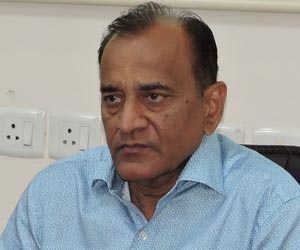India’s creaking justice delivery system has impacted millions of lives and brought miseries to people on a scale that has not been comprehensively documented. Governments and the judiciary have since decades grappled with the crisis but been largely ineffective in addressing the problem. Quick-fix solutions have been adopted and medium- to long-term strategies remained on paper. The result is that the judiciary is hopelessly overburdened with a backlog of cases that threatens to go nowhere, at least in the near future. Behind the problem lie issues of judicial promptness, governance and politics.
The gravity of the situation becomes glaring with the recent release of figures from the Supreme Court’s E-Committee findings. An overview will be in order. More than 2.18 crore cases are pending in courts across the country; 25 per cent of these have been pending for more than five years; of the 25 per cent such cases, close to 40 per cent have been hanging fire for more than 10 years. This is not all. More than seven lakh cases now pending, were filed by senior citizens, while over 21 lakh cases were initiated by women. There is so much talk of making the country senior citizen-friendly and woman-friendly, but the above numbers hardly further that impression. What is equally worrisome is that there are more criminal cases than civil cases which are pending. The general impression has been that civil matters takes decades to decide; sometimes they take so long that parties concerned are dead long before a verdict is out. But if alleged offences of a criminal nature get dragged on for a decade and more in various courts, the cause of justice stands ruined more than it is served.
The larger the State, the more the population, the bigger is the problem. Uttar Pradesh, Maharashtra and Gujarat have recorded the highest number of cases pending for over a decade. Uttar Pradesh, where crimes against women are rampant, has the biggest number of cases (4.4 lakh) filed by women that have been pending in courts since more than a decade.
The figures are damaging to the image of a country which is a vibrant democracy with a liberal Constitution, and laws that ensure the rights of citizens to a fair trial and speedy judgement. The problem is clear enough: Delayed justice. The solution, likewise, is also clear: Speed up trials and appeals processes and don’t sit on verdicts. It’s the mechanism for achieving the goal that remains mired in endless delays and inaction. There is enough material before the Government and the judiciary to work out solutions, but past experience has shown that both political will and judicial creativity have been missing. Will the Narendra Modi Government and the Supreme Court be able to take the bull by the horns? It remains to be seen.
Meanwhile, a high-level advisory council meeting will be held on August 29 under the chairmanship of the Union Minister for Law and Justice to discuss reforms in the justice delivery system. Various stakeholders are expected to take part in the deliberations. This will not be the first such meeting, nor will it be the last. Many ideas are thrown in the course of such interactions, but ideas without implementation are useless. In the last such meeting held in February, the Government had suggested that High Courts prepare annual reports comprising various relevant indicators to indicate performance in the broader areas of justice delivery. Such a document would also be useful in identifying bottlenecks and removing them. It could also have shown if the States had been allocating adequate funds to judicial infrastructure, given that the States now have more Central funds at their disposal following the implementation of the 14th Finance Commission recommendations. But little headway appears to have been made. It’s strange that, while there is agreement on the need to speed up justice, there has been over decades a dragging of feet on solutions such an integrated criminal justice information system that can streamline the legal process — from the time of commencement, leading up to investigation, then trial and prosecution, and finally to sentencing/ and appeal, and its conclusion. This entire process was to be available in an electronic format.
There are many reasons for the sorry state our justice delivery system is in, but they can be broadly placed into two categories: Shortage of judges (for which Governments too are accountable), and laxity within the justice system (for which judges are responsible). The first is of an enormous proportion and both the Government and the country’s apex court have to work in tandem to resolve it. To begin with, the ‘confrontation’ between the Executive and the judiciary after the court struck down the National Judicial Appointments Commission (NJAC), scrapped the enabling amendment Act as “unconstitutional and void”, and restored the collegium process of selecting judges where the Supreme Court has primacy, has to end. It’s in neither party’s interest — and certainly not in the litigants’ — to have the controversy simmer any longer. A lack of understanding between the Executive and the judiciary has without doubt led to some delays in the appointment of judges to fill vacancies, and this has adversely impacted the delivery of prompt justice.
But the NJAC issue is recent; the shortage of judges has been a serious problem for decades. As far back as in 1987, the Law Commission of India had recommended an increase in the number of judges from the existing 10 per 10 lakh people, to 50 per 10 lakh population. A Parliamentary Department Related Standing Committee too had given similar advice. That proportion is nowhere near to being achieved. The fact that the number of judges has increased six-fold in the last three decades (a 2012 National Court Management System report), has been offset by a 12-fold increase in the number of cases before various courts.
Perhaps it was the increasing hopelessness of the situation that prompted Chief Justice of India TS Thakur to break down some months ago at a joint conference attended by Chief Ministers and Chief Justices of High Courts. In the presence of the Prime Minister, the Chief Justice of India dissolved into tears while requesting the Government to address the growing vacancies in lower courts and provide speedy justice to the common man. He spoke of “inaction” by the Executive in increasing the number of judges from the present 21,000 to the recommended 40,000, even as the judges were facing an “avalanche” of litigations. Chief Justice of India Thakur, addressing the Prime Minister, said, “I beseech you to rise to the occasion and realise that it is not enough to shift the entire burden on the judiciary. He was, of course, referring to the Executive and not specifically to Mr Modi. Obliquely hinting towards criticism that judges were not putting in their optimum best even within the existing system and were in the habit of taking far too many holidays, he remarked, “We work during breaks too.”
Nobody will dispute that judges work hard, and this is especially laudable given the innumerable handicaps they face. Since decades, the Union Budget has allocated barely 0.5 per cent to one per cent to the judiciary, and this has impacted plans to upgrade judicial infrastructure. But, is the shortage of judges the only real reason for delayed justice? Are judges also not accountable for allowing cases to drag on to irrational limits?
A study conducted by judicial activist Raj Kachroo, who has organised a countrywide ‘march for justice’, points to failings within the system. It says that holding the shortage of judges responsible for the monumental backlog of cases is “flawed”. The study holds the practice of frequent adjournment of cases as one of the primary reasons for delays in justice. It’s true that repeated adjournments have broken the justice delivery system’s back. Influential people with access to the best legal brains often find ways to adjourn cases, but it’s also true that judges more readily than they should, accept such pleas. As Chief Justice of India, HL Dattu had asked judges to discourage needless adjournment of cases and pointed out that the apex court had enhanced its case disposal rate after it had cracked down on adjournments. Other Chief Justices (Swatanter Kumar and RM Lodha) too had underlined the role of what can only be termed as devious adjournments. Justice Kumar had called it “an unhappy state of affairs”, and Justice Lodha had emphatically said, “The culture of adjournment has to go. Seeking adjournment of scheduled hearing of cases at the drop of a hat must go.” Unfortunately, the adjournment culture is still alive and flourishing.
Then there are cases where verdicts are reserved for months, thus leaving the litigation hanging fire and blocking precious time of the judges.
Kachroo is dismissive of the linkages that have been drawn between the number of judges and the population. He maintains that, with half the country’s people living at subsistence levels, it is wrong to see them as potential litigants. They never approach the courts even when they face injustice, because they do not have either the resources or the knowledge to do so.
This apart, the process to fill judicial vacancies at times runs into legal trouble and consequent delays. Just one glaring example will suffice. In February 2014, the Delhi High Court issued an advertisement for the post of 85 judges in District Courts. Some 10,000 candidates (among them lawyers and judges) from across India, applied. A total of 700 were short-listed to appear for the written test. Only 15 from among these qualified. People in the know smelled wrongdoing. An application under the Right to Information Act was filed, alleging irregularities. The then Union Minister for Law and Justice DV Sadanand Gowda wrote to the Delhi High Court on the matter. Later, the Supreme Court heard a plea to quash the results. The apex court asked for an explanation from the High Court but refused to set aside the results. By then, it was 20 months since the post was advertised, and the legal wrangle had delayed the appointment of judges.
There are various ways to reduce the backlog to manageable limits. One is to have a mechanism which addresses issues of litigants so that they do not have to approach the courts or can quickly settle disputes even after entering the court premises. In 2006, an amendment to the Code of Criminal Procedure (CrPc) was made effective to allow for plea bargaining. This meant that, if an accused accepted his or her guilt in return for a reduced sentence, the court could quickly settle the matter. Of course, certain crimes of heinous nature were kept out of the plea bargain ambit, and only those which attracted a maximum sentence of seven years were allowed for plea bargaining. The idea was to cut down on litigation that involved matters such as cheque bouncing, which have choked the courts. According to an estimate, there are more than 18 lakh cheque bounce cases across the country, with 38,000 of them pending before various courts. The plea bargain system has worked but with limited result. In any case, it is only one of the many solutions that are needed.
While the Government wants the judiciary to be more nimble-footed in settling cases, it must not forget its own direct contribution to the backlog. It is the country’s single biggest litigator or party in a case. Prior to becoming the Chief Justice of India, TS Thakur had remarked, “…large number of cases coming against the Government cannot be a good sign of governance”. He added that governance also encompassed “adjudicating rights of a citizen which is legitimately due to him”. He asked the Government to be “responsive”, which could prevent litigation. The eminent judge had referred to an experiment that then Chief Minister of Jammu & Kashmir, Sheikh Mohammed Abdullah, had initiated: He had formed a special cell within the State’s Law Ministry that studied and settled a large number of cases, preventing them from reaching the courts.
To this end, the Modi Government’s proactive role must be acknowledged. It’s common sense that more laws lead to more interpretations, and, therefore, more litigation. In other words, the pruning or tweaking of some laws — and their elimination even — can cut down on cases to a large extent. Since assuming power a little over two years ago, the Bharatiya Janata Party-led NDA Government has done away with more than 1,000 laws that had outlived their purpose long ago. Place this figure alongside the fact that 1,300 Acts had been scrapped in the last 64 years before the incumbent regime came to power, and one will understand the significance of the task achieved.
William Ewart Gladstone is supposed to have said, “Justice delayed is justice denied”; William Penn had remarked, “To delay justice is injustice”; and Martin Luther King Jr commented, “Justice too long delayed is justice is denied.” Clearly, mockery of justice has been going on for centuries across the world. But that cannot be any consolation to those millions of Indians who have been, and are being, emotionally and financially drained fighting cases that don’t seem to conclude.
(The writer is a senior political commentator and public affairs analyst)
Published Date: 16th August 2016, Image Source: http://newsworldindia.in
(Disclaimer: The views and opinions expressed in this article are those of the author and do not necessarily reflect the official policy or position of the Vivekananda International Foundation)










Post new comment